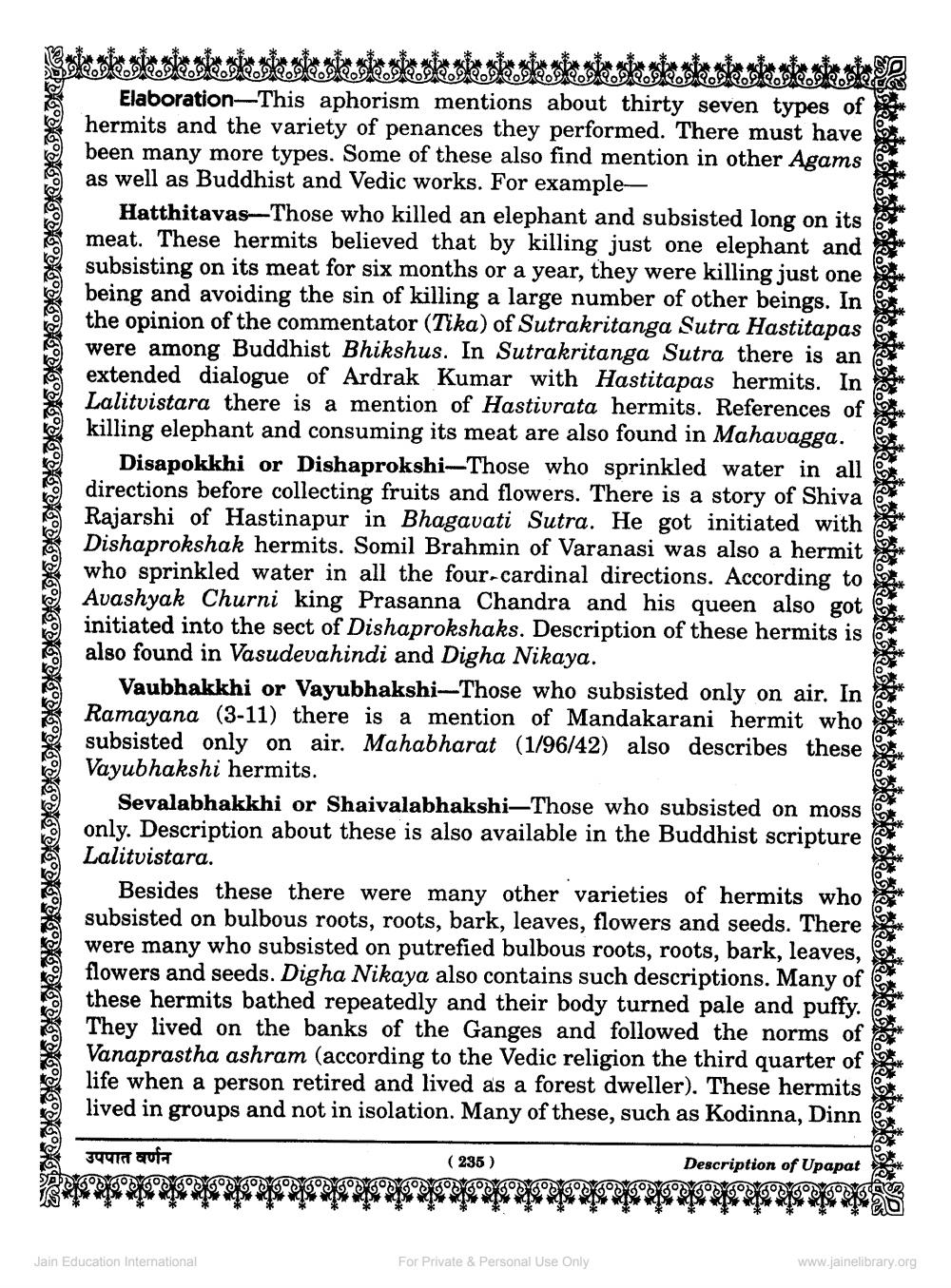________________
URODOOPSY DO VODOODPORNOS CORTOVCOMSOCIE
Elaboration—This aphorism mentions about thirty seven types of hermits and the variety of penances they performed. There must have been many more types. Some of these also find mention in other Agams as well as Buddhist and Vedic works. For example
Hatthitavas-Those who killed an elephant and subsisted long on its meat. These hermits believed that by killing just one elephant and subsisting on its meat for six months or a year, they were killing just one
avoiding the sin of killing a large number of other beings. In the opinion of the commentator (Tika) of Sutrakritanga Sutra Hastitapas were among Buddhist Bhikshus. In Sutrakritanga Sutra there is an extended dialogue of Ardrak Kumar with Hastitapas hermits. In Lalituistara there is a mention of Hastivrata hermits. References of killing elephant and consuming its meat are also found in Mahavagga.
Disapokkhi or Dishaprokshi—Those who sprinkled water in all directions before collecting fruits and flowers. There is a story of Shiva Rajarshi of Hastinapur in Bhagavati Sutra. He got initiated with Dishaprokshak hermits. Somil Brahmin of Varanasi was also a hermit ** who sprinkled water in all the four-cardinal directions. According to Avashyak Churni king Prasanna Chandra and his queen also got initiated into the sect of Dishaprokshaks. Description of these hermits is also found in Vasudevahindi and Digha Nikaya.
Vaubhakkhi or Vayubhakshi-Those who subsisted only on air. In Ramayana (3-11) there is a mention of Mandakarani hermit who subsisted only on air. Mahabharat (1/96/42) also describes these Vayubhakshi hermits.
Sevalabhakkhi or Shaivalabhakshi-Those who subsisted on moss only. Description about these is also available in the Buddhist scripture Lalituistara.
Besides these there were many other varieties of hermits who subsisted on bulbous roots, roots, bark, leaves, flowers and seeds. There were many who subsisted on putrefied bulbous roots, roots, bark, leaves, e flowers and seeds. Digha Nikaya also contains such descriptions. Many of these hermits bathed repeatedly and their body turned pale and puff They lived on the banks of the Ganges and followed the norms of Vanaprastha ashram (according to the Vedic religion the third quarter of life when a person retired and lived as a forest dweller). These hermits lived in groups and not in isolation. Many of these, such as Kodinna, Dinn
उपपात वर्णन
(235)
Description of Upapat
*
Jain Education International
For Private & Personal Use Only
www.jainelibrary.org




